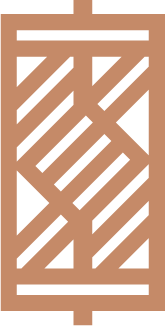Uniqlo Self-Checkout Mobile App
UX & UI Design
The Uniqlo Self-checkout Mobile App case study documents the processes involved in a redesign of a fashion retail and e-commerce app. The app includes a product scan feature for customers to perform a self-checkout at a physical store. This design by 3 UX researchers took 11-days to complete and is submitted to the UXDI course at General Assembly, Singapore.

Project Overview
11-day Design Sprint and Research Process
The 11-days group project (3 members) includes the following processes and methodologies. I am directly or indirectly involved in every stage of the process, including the visual design for the interactive prototype.

How Might We…
Narrowing down the focus of the project
At the start of the project, we had three main questions in mind.

Defining the In-store Experience
We define the unique experience at the physical store to adapt it to the mobile app.
- Greeted with ‘Welcome to Uniqlo’ every time you enter the shop;
- Same familiar shop layout at every outlet;
- Wide open aisle, bright lights, neatly stacked shelves;
- Sales and promotions throughout the year for different products each week;
- Easy to find the right sizes without help from a sales assistant;
- Strong visual branding from clothes tags to signages.
Contextual Inquiry
Conducting user research at the Uniqlo store
We conducted a field study at an outlet by speaking to customers and shop assistants. Also, we showed the product scan feature found on our competitor’s mobile app.

What we noticed and found out:
- Shoppers do not know of the Uniqlo app even though they frequently shop at the store;
- The current app is for e-commerce only;
- Shoppers will consider shopping online after knowing of the app;
- Shoppers are wowed by the product scan feature as the technology is fascinating. The same technology is already available at a kiosk at the flagship store (in the city). Other smaller outlets (in the neighbourhoods) did not have this kiosk, probably due to space constraints;
- The same product might be cheaper in the app as there are mobile exclusive discounts. This, although they may incur additional delivery fees ($6 for spendings < $30);
- Various products are available only at the flagship store or on the mobile app;
- Long queues were observed at the store during peak hours.
User Research
Gathering insights from user research
We conducted user interviews to find out customer’s habits, needs, and pain points. The insights gathered were arranged in an affinity map before consolidating it into two user personas.



User Persona & Customer Journey Map
Defining user pain points and opportunities for the business
The two personas – a user who prefers to shop online, and a user who prefers to shop at the physical store, are representations of potential users of the redesigned mobile app. Their experience in using the mobile app is illustrated in a customer journey map to show how they go about performing tasks such as shopping for clothes at the physical and e-commerce store.




Feature Prioritisation
Features to include in the mobile app based on business and user needs
Through a design studio process, we came up with various new features we intend to include in the new app. These features were arranged based on feedback gathered from an online user survey and what we believe fulfils business goals. Features at the top right corner (the box in red) are the ones that should be included in the new version of the app.

Mid-Fidelity Prototype
Initial prototype design used for user testing
The mid-fidelity prototype by my teammate Parul was used for user testing. From feedback gathered, participants felt that the app does not look like it was Uniqlo’s app. There were also major problems with the user flow in the product scanning and checkout process. Participants also commented that they did not require more information about the product they have on their hand.

High-Fidelity Prototype
Interactive mock-up on InVision
From the usability test, we iterated a high fidelity prototype. The branding was also enhanced in the design by using the right fonts and colours. The interactive prototype can be viewed on InVision.





Usability Testing
Gathering quantitative and qualitative feedback from participants
Participants were given 4 tasks to complete. To collect quantitative data, we timed users on how fast they took to complete the task on the existing app and new app. We also asked participants to rate the difficulty level of each task and conducted a post-task survey using the System Usability Scale(SUS) test.




Design Iteration
Improving the user flow after collecting feedback from users
After the usability test, we discovered that users were confused by the product detail page after scanning the barcode. They assumed that the item was already added to the cart after the scan. They were also confused about what to do after performing a self-checkout in store. We made the process more informative for users by providing feedback on what is happening.




Promoting the App Usage
Getting users to use the self-checkout feature in the store
Through our app redesign, we created opportunities where users can use the app within the physical store. Hence, to encourage the usage, this should be accompanied by various promotional materials around the stores. For example, the tag can be changed to inform users to scan it with the app. There can also be an express packing lane to bring awareness to users about the self-checkout feature.


Project Details
— School
General Assembly Singapore
— Project Date
Dec 2017
— Special Thanks
Nie Zhen Zhi
Wilson Chew
— Team Members
Cheryl Lee
Parul Shukla
Leow Hou Teng
— My Role
User research
Visual design
Usability testing
— Project Category
UI/UX
— Deliverables
Mobile App interactive prototype
Feature this Project
Share this project on social media, or on a blog post!
